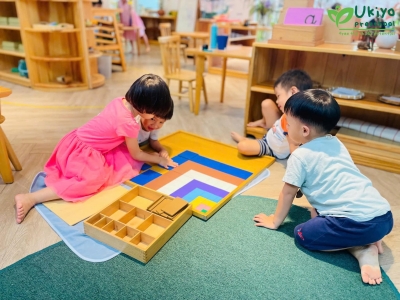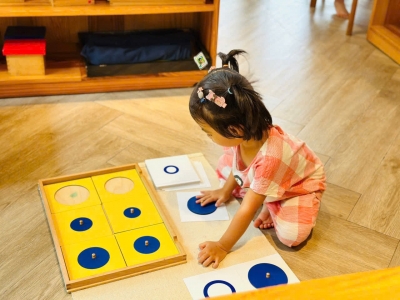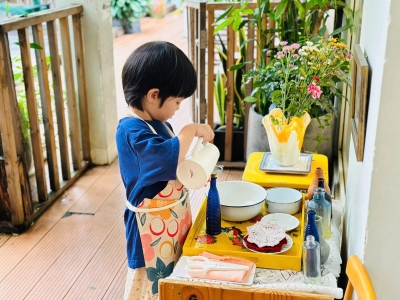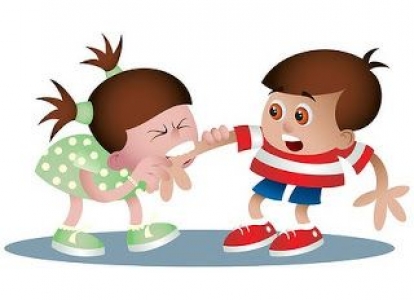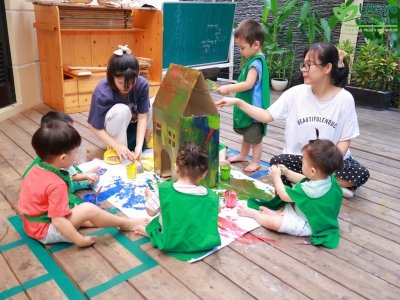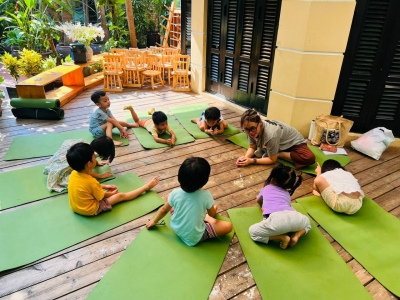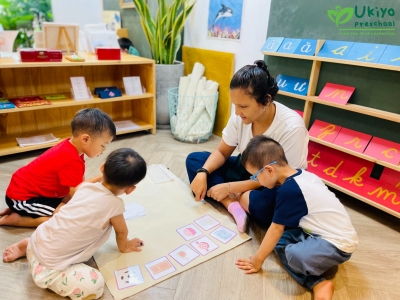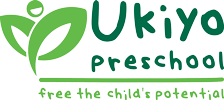THE NEW EDUCATION OF MOVEMENT
“What little fidgets children are!” How often I have heard worried mothers complain that their children never seem able to keep still for two minutes in a row. And I always answer, “Of course children cannot keep still on demand; it is not natural. But as for being little fidgets, that is another matter. It is easy enough to stop that.”
Fidgeting is aimless movement, and a healthy child does not move aimlessly as a rule, unless he is thwarted in some way. What so many parents do not realize is that continual movement is natural to children, and that they develop through activity.
Of course there are times when it is necessary that a child should keep still – you have just dressed your daughter to go out, for instance, and you cannot have her tearing off to the garden to make mud pies. Well, there is an alternative to sitting her down and simply telling her to keep still until you are ready.
Have you been observing her carefully? What, then, is her latest interest in a quiet activity? Perhaps only half an hour ago you saw her absorbed in fitting the key in the door and turning the lock. If you have a little case with a lock and key, then give it to her. If she takes it with interest and immediately begins fitting the key and undoing the catch, you will be surprised to see how long she will keep herself occupied. There is no fidgeting in the child who is absorbed in some activity; there is no scene and spoilt temper before you even get her out of the house.
Time and again you must have noticed how children become restless and are troublesome when you are doing things for them. Mother is in a hurry so she does not allow her little son to struggle with his socks and shoes, but puts them on for him. He rebels openly perhaps or simply fidgets and that is a sign that he is being thwarted.
Do not think for a moment that I maintain that a child should always have his own way. That is not what I mean when I say that it is wrong to thwart children. But there are two ways of trying to teach obedience. In the misguided old way children are simply told to do this and that, and that is all there is to it; they are punished if they are disobedient.
Then there is the other way on which my entire system of education is founded. Ask from your child only what he can give you; that is, ask for obedience in such a way that your child will be glad to give it, and he will learn the habit of obedience easily because he has learnt it naturally.
Not so long ago, when a child was in school he was expected to sit perfectly still while the teacher talked to him. No wonder children were restless, disobedient, and found learning difficult; indeed, it is a wonder they learnt as much as they did, but I suppose something was bound to stick sooner or later after many repetitions.
Then, as a recreation from this unnatural stillness and silence, the children were given a set of exercises – and their cramped little bodies needed them too; I have no doubt that these exercises involved no thought or perseverance on the children’s part, they were merely simple movements made in obedience to a command.
But we teach children in a different way today. When they arrive in the morning, there are many things to attend to. The children look after the classroom. They sweep with their own small brooms and dust and scrub and polish. Then there is their personal cleanliness. When a child’s hands are dirty, we do not take him to the basin and wash his hands or hold his face while we do the washing. The children learn to do these things for themselves as a matter of course, and even toddlers of two and three years can carry objects and wash themselves and lay a table.
The children love to do these things for themselves and they learn to be careful and precise in their movements.
This is both education of movement, because there is a refinement of muscular coordination when the work is carefully done, and education through movement, because these activities involve judgment and will, self-discipline, and an appreciation of orderliness. We do not teach the children these things to make little servants of them, but because we have observed that of their own accord children actually take the greatest interest in perfecting all the movements of daily life.
Among the school material small children enjoy most are the frames with two pieces of cloth – some have buttons and buttonholes, others ribbons, hooks and eyes, and shoe buttons – and it is delightful to watch the toddlers doing up buttons and tying bows with tremendous concentration. The next thing is that they are anxious to use their new knowledge; they want to dress themselves – and the wise mother will let them do so, simply standing by and helping when help is asked.
This education of movement goes right to the roots of my system of education. For instance, children used to learn to read first and write afterwards – now they learn the other way round. First of all, they handle large letters of the alphabet with a sandpaper surface. A child of three will trace the outlines with his finger and learn to name the letter long before he can recognize it at sight. Then the child will take a pencil and draw the outline for himself. That is a great step forward. After that he learns to combine the sounds and write words – then reading follows naturally and without the slightest difficulty.
It is the same with arithmetic. In the old way the teacher made the children learn the multiplication tables by heart and then taught them to do the sums. Today children handle rods of different lengths and learn the proportions they bear to one another by arranging them accurately. This method leads them in a natural way from practice to principle.
It follows that if we learn first through practice, there is movement in all our lessons – but it is controlled movement because the children are always working towards the mastery of a set of movements. Therefore, they are behaving in the active way natural to children and learning at the same time.
This is the new education of movement, and in a child’s home life the same principles should apply. The child who has to sit still listening to a teacher is in the worst possible state of mind and body for learning. Likewise, the child whose life at home is strictly ordered according to the convenience of grown-ups without knowledge or consideration of the natural movement and active interest of childhood is in the worst possible state of mind and body, either for obedience or good manners.
The child who is handling specially designed materials at school, the child at home who is allowed to dress himself, help lay the table, in fact carry on the hundred and one activities that interest him and harm nobody, is in reality busily at work on his development – and the method of his learning is through movement.
(From Maria speaks to Parents)
Others



